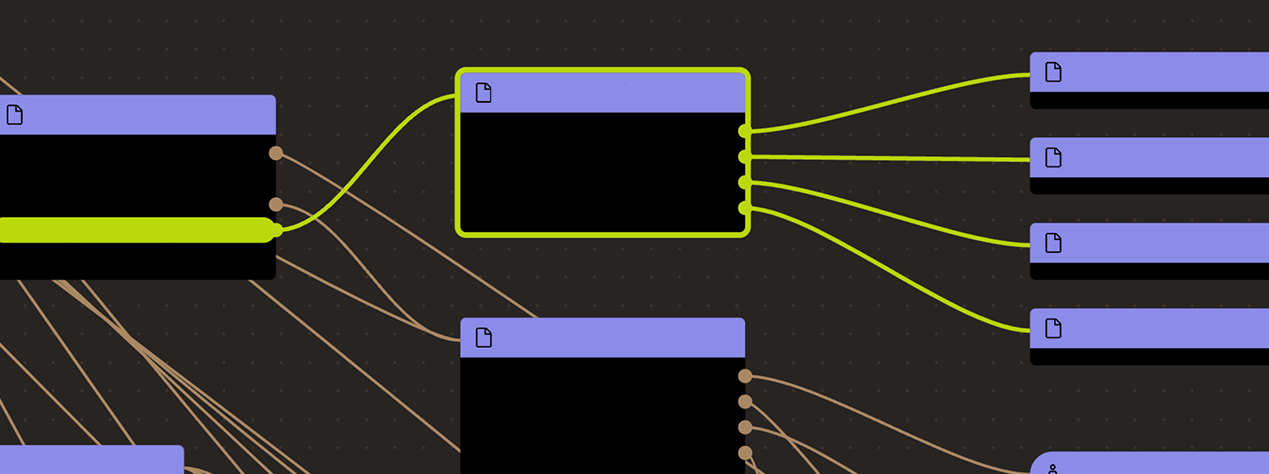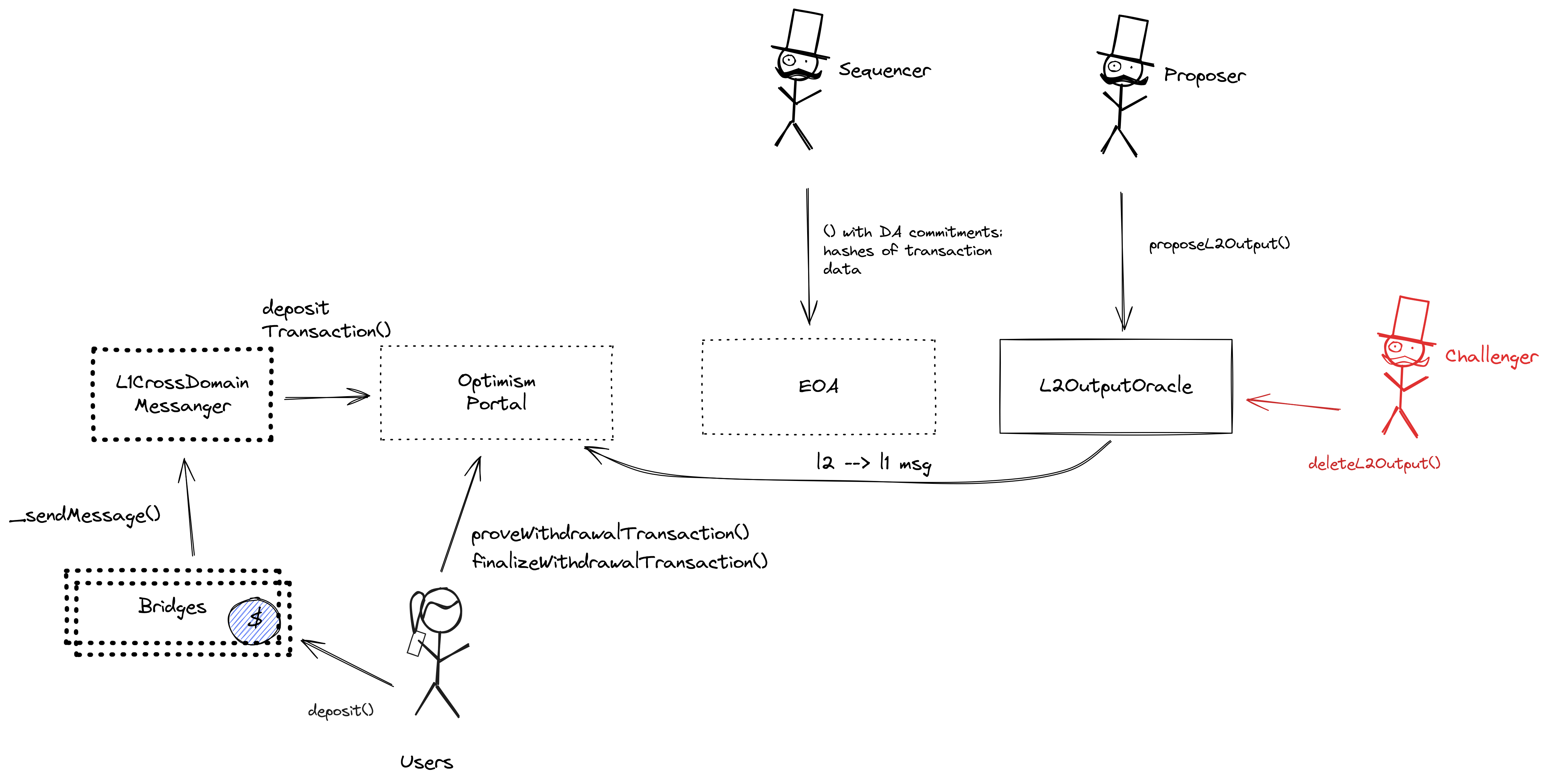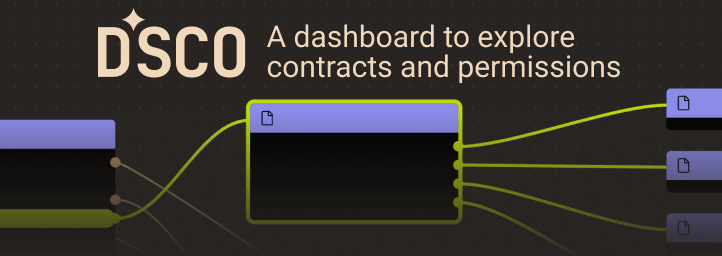Search
Search for projects by name
 Mantle
Mantle
Badges
About
Mantle is a modular general-purpose Optimium with a protocol design philosophy that aims to offer users a less costly and more user-friendly experience, provide developers with a simpler and more flexible development environment, and deliver a... comprehensive set of infrastructure for the next wave of mass-adopted dApps.
Badges
About
Mantle is a modular general-purpose Optimium with a protocol design philosophy that aims to offer users a less costly and more user-friendly experience, provide developers with a simpler and more flexible development environment, and deliver a... comprehensive set of infrastructure for the next wave of mass-adopted dApps.
Why is the project listed in others?
Consequence: projects without a proper proof system fully rely on single entities to safely update the state. A malicious proposer can finalize an invalid state, which can cause loss of funds.
Consequence: projects without a data availability bridge fully rely on single entities (the sequencer) to honestly rely available data roots on Ethereum. A malicious sequencer can collude with the proposer to finalize an unavailable state, which can cause loss of funds.
Learn more about the recategorisation here.
2024 Jun 30 — 2025 Jun 30
2024 Jun 30 — 2025 Jun 29
The section shows the operating costs that L2s pay to Ethereum.
2024 Jun 30 — 2025 Jun 29
The chart illustrates how "live" the project's operators are by displaying how frequently they submit transactions of the selected type and if these intervals deviate from their typical schedule.
2025 May 31 — Jun 30
Move to EigenDA
2025 Mar 19th
Mantle deactivates MantleDA and data availability migrates to EigenDA.
Funds can be stolen if
Funds can be lost if
Funds can be frozen if
MEV can be extracted if
Currently the system permits invalid state roots. More details in project overview.
There is no window for users to exit in case of an unwanted regular upgrade since contracts are instantly upgradable.
Only the whitelisted proposers can publish state roots on L1, so in the event of failure the withdrawals are frozen.
Data is posted to EigenDA
Transactions roots are posted onchain and the full data is posted on EigenDA. Since the ServiceManager bridge is not used, availability of the data is not verified against EigenDA operators, meaning that the Sequencer can single-handedly publish unavailable commitments.
Funds can be lost if the sequencer posts an unavailable transaction root (CRITICAL).
Funds can be lost if the data is not available on the external provider (CRITICAL).
OP Stack projects can use the OP fault proof system, already being deployed on some. This project though is not using fault proofs yet and is relying on the honesty of the permissioned Proposer and Challengers to ensure state correctness. The smart contract system permits invalid state roots.
Funds can be stolen if an invalid state root is submitted to the system (CRITICAL).
The system has a centralized operator
The operator is the only entity that can propose blocks. A live and trustworthy operator is vital to the health of the system.
MEV can be extracted if the operator exploits their centralized position and frontruns user transactions.
Users can force any transaction
Because the state of the system is based on transactions submitted on the underlying host chain and anyone can submit their transactions there it allows the users to circumvent censorship by interacting with the smart contract on the host chain directly.
Regular messaging
The user initiates L2->L1 messages by submitting a regular transaction on this chain. When the block containing that transaction is settled, the message becomes available for processing on L1. The process of block finalization takes a challenge period of 7d to complete.
Funds can be frozen if the centralized validator goes down. Users cannot produce blocks themselves and exiting the system requires new block production (CRITICAL).
Forced messaging
If the user experiences censorship from the operator with regular L2->L1 messaging they can submit their messages directly on L1. The system is then obliged to service this request or halt all messages, including forced withdrawals from L1 and regular messages initiated on L2. Once the force operation is submitted and if the request is serviced, the operation follows the flow of a regular message.
EVM compatible smart contracts are supported
OP stack chains are pursuing the EVM Equivalence model. No changes to smart contracts are required regardless of the language they are written in, i.e. anything deployed on L1 can be deployed on L2.

Ethereum
Roles:
Allowed to challenge or delete state roots proposed by a Proposer.
Allowed to pause withdrawals. In op stack systems with a proof system, the Guardian can also blacklist dispute games and set the respected game type (permissioned / permissionless).
Allowed to post new state roots of the current layer to the host chain.
Allowed to commit transactions from the current layer to the host chain.
Actors:
- A Multisig with 6/13 threshold.
- Can upgrade with no delay
- L2OutputOracle
via
- acting via ProxyAdmin - SystemConfig
via
- acting via ProxyAdmin - L1CrossDomainMessenger
via
- acting via ProxyAdmin - L1StandardBridge
via
- acting via ProxyAdmin - OptimismPortal
via
- acting via ProxyAdmin
- L2OutputOracle
- Can upgrade with 1d delay
- L1MantleToken
via
- acting via TimelockController with 1d delay → MantleTokenProxyAdmin
- L1MantleToken
- Can interact with SystemConfig
- Can interact with TimelockController
- cancel queued transactions
- execute transactions that are ready
- manage all access control roles with 1d delay or with no delay
via
- acting via TimelockController with 1d delay - or - acting directly - propose transactions
- Can interact with AddressManager
- set and change address mappings
via
- acting via ProxyAdmin
- set and change address mappings
- A Multisig with 3/7 threshold.
- A Challenger - acting directly
- A Guardian - acting directly


Ethereum
Contains a list of proposed state roots which Proposers assert to be a result of block execution. Currently only the PROPOSER address can submit new state roots.
- Roles:
- admin: ProxyAdmin; ultimately MantleSecurityMultisig
- challenger: MantleEngineeringMultisig
- proposer: EOA 2
The main entry point to deposit funds from host chain to this chain. It also allows to prove and finalize withdrawals.
- Roles:
- admin: ProxyAdmin; ultimately MantleSecurityMultisig
- guardian: MantleEngineeringMultisig
- This contract stores the following tokens: ETH, MNT.
Sends messages from host chain to this chain, and relays messages back onto host chain. In the event that a message sent from host chain to this chain is rejected for exceeding this chain’s epoch gas limit, it can be resubmitted via this contract’s replay function.
- Roles:
- admin: ProxyAdmin; ultimately MantleSecurityMultisig
The main entry point to deposit ERC20 tokens from host chain to this chain.
- Roles:
- admin: ProxyAdmin; ultimately MantleSecurityMultisig
- This contract can store any token.
- Roles:
- owner: TimelockController
A timelock with access control. The current minimum delay is 1d.
- Roles:
- canceller: MantleSecurityMultisig
- defaultAdmin: MantleSecurityMultisig, TimelockController; ultimately MantleSecurityMultisig
- executor: MantleSecurityMultisig
- proposer: MantleSecurityMultisig
- Roles:
- owner: MantleSecurityMultisig
Value Secured is calculated based on these smart contracts and tokens:
Main entry point for users depositing ERC20 token that do not require custom gateway.
Main entry point for users depositing ETH, MNT.
The current deployment carries some associated risks:
Funds can be stolen if a contract receives a malicious code upgrade. There is no delay on code upgrades (CRITICAL).
